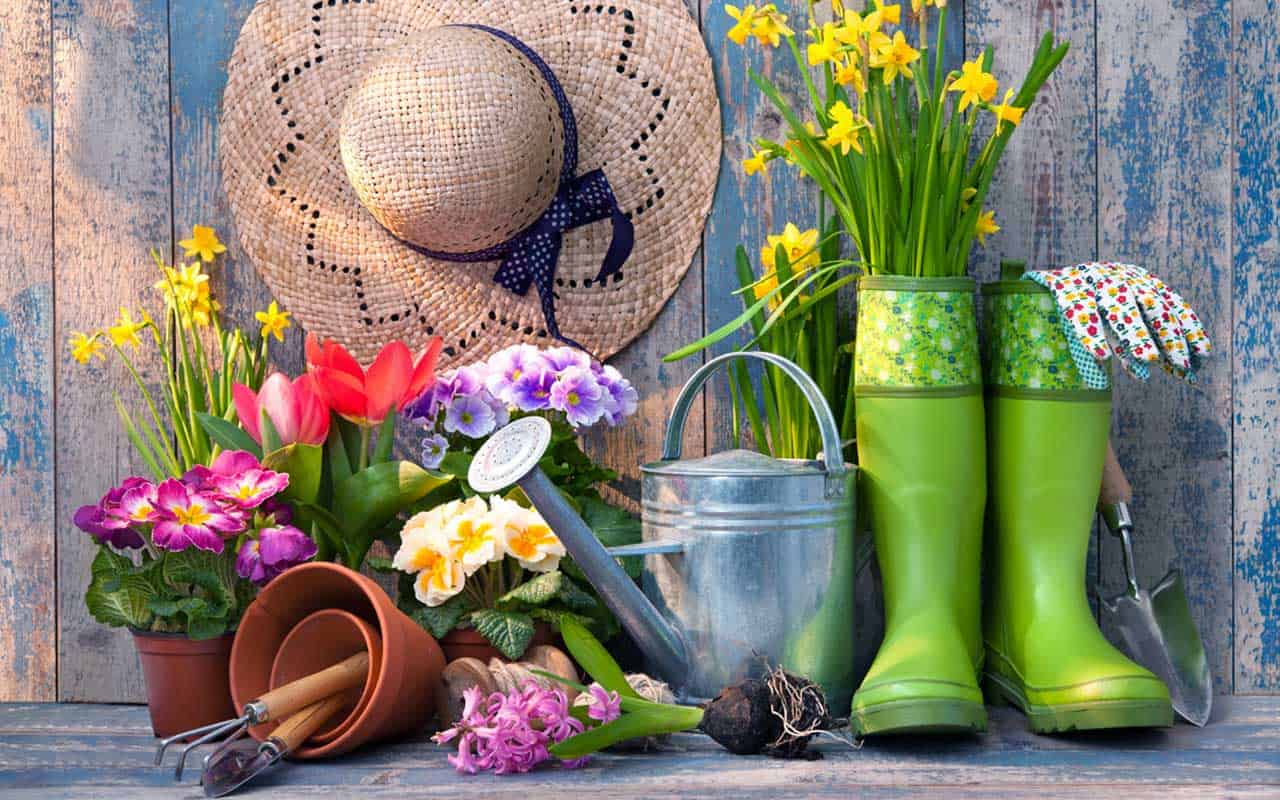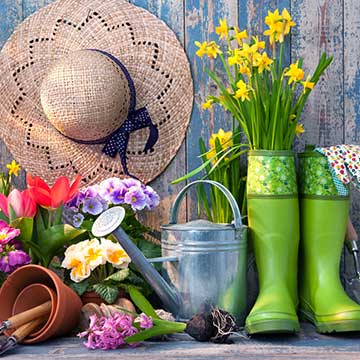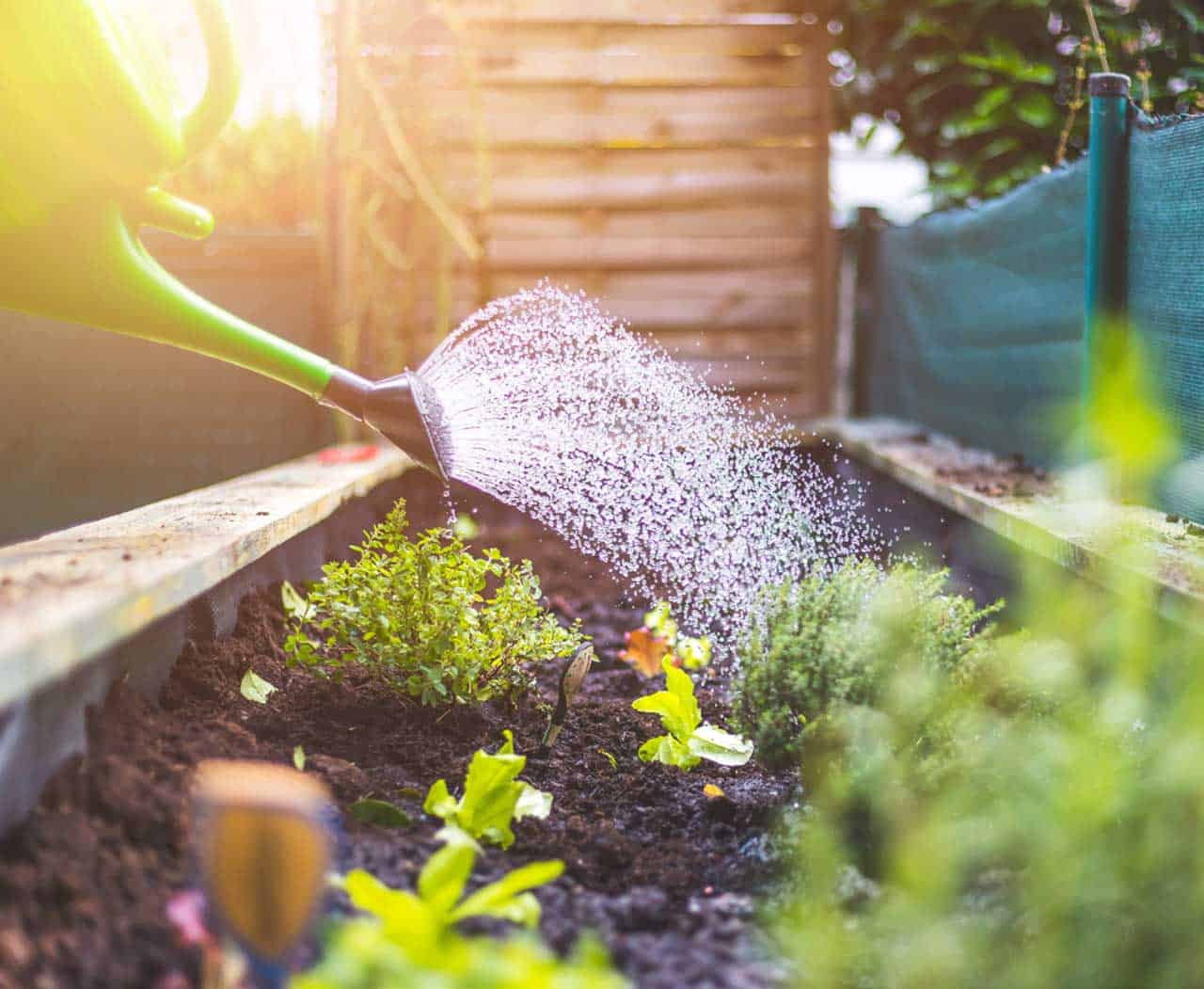This Month’s Featured Article

Let’s get started in the Garden
 Hello, gardening enthusiasts! Welcome to April, the month to start getting serious about what you hope to grow this season. Whether your plot is several acres, some select beds, or even select containers on a patio, you can start dreaming and scheming now. And what better way than with tips from a Master Gardener?
Hello, gardening enthusiasts! Welcome to April, the month to start getting serious about what you hope to grow this season. Whether your plot is several acres, some select beds, or even select containers on a patio, you can start dreaming and scheming now. And what better way than with tips from a Master Gardener?
Master Gardeners (MG) are a group of trained volunteers who work in partnership with their county Cooperative Extension office to extend information throughout the county. The first MG program was started in Washington state in 1972. Dutchess County was the first county in New York state (1975) to train MG volunteers. Forty six states now have programs. MGs teach classes and workshops, plant and maintain demonstration gardens, provide information at events and answer gardening questions. They love to learn and share their skills to help others be better gardeners. In Dutchess County alone there are close to 100 Master Gardeners.
When I contacted the CCE about this article, the community horticulture resource educator, Joyce Tomaselli, put me in touch with Chris Ferrero. Chris completed her Master Gardener training in 2012 and remains very active with the organization. She currently presents 18 talks on a wide range of topics for the Master Gardener Speakers’ Bureau. Chris has led demonstration garden renovation projects, coordinated community events, and served on committees as a perennials specialist know for particular expertise in shade gardening, flowering shrubs, pollinator-approved planting designs, and native plants as alternatives to invasives.
In an exchange of emails and then in conversation on the phone, I quickly learned that Chris is not just passionate, but also curious, empathetic, enthusiastic, and fierce around everything to do with gardening. “I have always loved being outdoors,” she says when I ask what sparked her love of gardening, “but my career choice was corporate marketing. As soon as I moved from the city of Wilmington, DE, to Hopewell Junction in the Hudson Valley and I had some land to work with, I jumped right in.” She continues, “It was a slow evolution of learning for me until I got into the Master Gardener program, then I really started learning. I always try to look at things from the perspective of the average home gardener,” she says, “because that’s what I was. The learning curve got steep fast when I did the program, and ever since,” she laughs, “but my favorite thing is learning.”
I certainly learned a lot in a very short time just from the basic questions I posed to Chris, which follow. There are more resources at the end, too. Enjoy!
Whether your gardening space is large or small, how do you get started without feeling overwhelmed?
There are so many ways to “break ground,” but we always suggest starting small! It definitely helps to sketch out a plan on paper, and to make lists of plants you want to try. It might be a 3’x6’ raised bed for vegetables, a 6’ diameter mailbox planting, or a few yards down the side of your front walk or driveway. All can be extended in future seasons. Learn as you go! Think about positioning your gardens where you can enjoy them from inside your home, too.
How can you assess the potential for your site, or groups of sites?
A soil analysis is always a great place to start. Cornell Cooperative Extensions in multiple counties will evaluate soil samples. In Dutchess County, contact Francheska Kuilan for forms and instructions at fk232@cornell.edu. At your home, consider sunlight (time of day and length of exposure), water issues, competition from tree roots… even distance from a source of water!
What are your top three deer-proofing tips?
The overarching recommendation is to understand your deer. I do a one-hour talk on how to protect your gardens from these marauders, but you have to accept that this is a matter of co-existence, not warfare. We’ve invited them into our yards by building our homes on their habitat, and making it really yummy (deer love hostas, for example). I try to tame what I call “Deer Rage” by offering Cornell-researched solutions in three categories. The first is barriers. The only guaranteed deer deterrence is an 8-foot fence, but it can be plastic deer netting on sturdy supports, and it can be 4’ high or even less if the area is small enough for deer to sense entrapment (an area less than about 8’x12’). The second is repellents, of which the most reliable are sprays with putrescent egg solids as the first ingredient on the label (read and follow the WHOLE label). The third is landscape choices, i.e. shutting down the salad bar as my MG friend Mary Gall says. There are just a few very good books – my favorite is Neil Soderstrom’s Deer Resistant Landscaping – but I think the best single resource is a website developed by our sister Cooperative Extension in New Jersey, the Rutgers Deer Resistance Database (Google search Rutgers Deer Resistant).
What about rabbits, moles, slugs, and other critters? Even birds?
Yes, so many co-conspirators out there! We call them (all but birds) nuisance wildlife. You have to start by understanding what each species needs and what their habits are – what they eat and what time of the year – before designing successful strategies. Soderstrom’s book is actually subtitled Proven Advice and Strategies for Outwitting Deer and 20 Other Pesky Mammals. That’s a good place to start. Slugs are a separate problem. But birds, really? I have a presentation on how to attract them to your yard with native berry-producing shrubs and trees!
What question do you get asked most frequently?
Our number one question is “Why won’t my Hydrangea bloom?” by which most are referring to Hydrangea macrophylla, the blue mopheads. Tim Boebel, author of Hydrangeas in the North, calls these “the rebels of the plant world.” Unfortunately, Martha Stewart lives a couple zones south of us and has full-time gardeners, but has made everyone think their shrubs should be as beautiful as hers. My answer? There are other beautiful hydrangeas you need to try! I offer a one-hour program titled Hydrangea Success in the Northeast that aims to inspire home gardeners to plant the other five of the Hydrangea species that actually do well in colder climates. These are: H. paniculata, H. arborescens (the white mopheads that are native to the NE), H. serrata, H. quercifolia (my favorite, the beautiful oak-leaf hydrangea), and the climbing hydrangea, H. petiolaris.
For container gardening, if you want to plant herbs, are there some that are more compatible with others? Are there some that shouldn’t be planted together, or even nearby?
Herbs as a group are pretty sturdy and also pretty tolerant of each other. They do really well in mixed ornamental gardens as well as containers. The one caution I offer is that the herbs of Mediterranean origin – Rosemary, Lavender, Oregano, Sage, Thyme – will do best in the poor, sandy, even rocky soil of their original homeland. Which is one reason they do well in containers that are somewhat neglected: You can easily kill them with kindness! We recommend you plant mint by itself in a container, not in the ground, because its root system will take over your entire landscape otherwise.
What should people look for in potting soils for container gardens?
A good potting mix is actually not “soil” – garden soil is too heavy and can become too compacted in pots. Potting mixes traditionally combine peat moss, vermiculite and perlite for good drainage. But beware the more expensive mixes that advertise slow-release fertilizer to “last throughout the season.” It won’t. It just takes a few rainstorms to leach all the nutrients out of that soil, and if you have a rainy June, your plants will starve by July unless you keep up by watering with a synthetic that I call “blue water.” I prefer starting with any plain light potting mix (e.g. Pro-Mix), mixing in as much as 25% compost, and then adding an organic, slow-release granular fertilizer like Plant Tone (or Flower Tone or Bulb Tone). Then at the end of the season, this soil can be saved and re-used by combining with new soil and/or compost next season.
How do you approach keeping a large garden relatively weed-free, or is that something you have to embrace?
For me the answer depends on how you define “weed.” If you’ve converted your back yard into a wildflower meadow, flowering weeds are part of the (chaotic) beauty! Most home gardeners have beds and borders they like to keep weed-free for aesthetic reasons, but weeds also steal nutrients and moisture from the more desirable plants around them. Two solutions: 1. MULCH! There are many choices: You can buy shredded bark mulch, or shred fall leaves by running your lawn mower over them in the fall and fluffing them over your gardens. Mulch keeps moisture from evaporating (and minimizes supplemental watering) as well as suppresses weeds. But the goal should be 2. to plant densely enough that eventually the plants shade the ground between them, as a natural way to discourage weeds and to preserve moisture. The bonus of densely planted gardens is that pollinators are more easily attracted and can forage more efficiently!
What are your suggestions for best tools?
I took a survey among about 100 Master Gardeners in Dutchess County for an article on tools, and the winner was the Hori-Hori knife because it replaces so many individual tools. It digs holes for bulbs or transplants, harvests root vegetables, cuts through roots and twine and lots of other things you don’t want to return to the shed to get.
What brings you the most pleasure from gardening?
I’ve always loved working outdoors, and also love the creative part of gardening: creating beauty that continually nourishes you throughout the season in new ways.
What causes you the most frustration?
Plant failure. I tell home gardeners all the time not to take it personally. “It’s not just YOU!” And yet, I can’t get over why some plants just won’t thrive, even when I’ve followed all the Best Practices, including The Right Plant in the Right Place. I still feel like those peonies should be doing better over there *sigh.
What are some surprises about gardening in the upper Hudson Valley that you’ve learned over the years?
How short a growing season we really have! You try to trick Dahlias into blooming earlier by getting them going under lights, indoors, in March… and yet it’s August before they’re really pumping out the color, and our first frost is just a few weeks later.
What are your favorite gardening books, websites, or other sources of information?
My library of gardening books is vast – and growing! I did another survey among my Master Gardener friends to get some perspective and it yielded a surprise. My favorite book is Tracy DiSabato-Aust’s The Well-Tended Perennial Garden, and it happens to be popular with all of us. It includes very, very practical advice for perennials fans.
What’s the most beautiful garden you’ve visited, and why?
That’s difficult because there are so many kinds of beauty. But my original inspiration is still my favorite, I guess: Longwood Gardens in Kennett Square, PA. It’s historic, panoramic, ground-breaking, and feeds so many aspects of horticulture and home gardening both. They have a precious children’s garden in the conservatory, which is spectacular year-round. There are woodland gardens, topiary, water gardens and fountains, a fabulous hillside garden, so much to explore and learn from.
There is so much to explore and learn from Chris and Master Gardener volunteers. The subjects of her talks vary from Bonkers for Begonias to Home Composting for Everyone to Gardening in Small Spaces to Eco-Friendly Roses for Northeast Gardens to the one she says is her most popular, Gardening for Baby Boomers: 10 Ways to Garden Smarter as We Get Older. Go to the Dutchess County CCE website at www.ccedutchess.org/gardening for more information. It’s a treasure-trove in and of itself, but you can also sign up there for the monthly Master Gardener newsletter, Dutchess Dirt, which lists the upcoming Speakers’ Bureau free presentations at libraries around the county, which welcome patrons from other libraries. (And Chris notes, your own librarian should always appreciate knowing what programs you’re interested in seeing).
Chris and her husband now live in the Berkshires, and she speaks regularly and gives tours at the Berkshire Botanical Garden in West Stockbridge, MA. That’s another place you must visit if you haven’t already. She will give three talks coming up in April, May, and June for Berkshire Botanical via Zoom: Check it out at www.berkshirebotanical.org/
Happy Gardening in 2022 and beyond!



